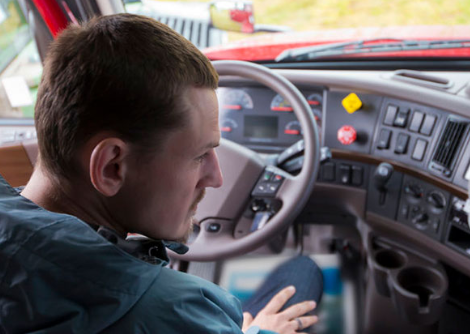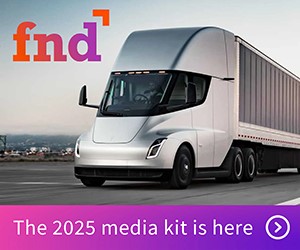OOIDA remains concerned about the under-21 Apprenticeship Pilot Program (APP) that will allow younger drivers to operate in interstate commerce
OOIDA filed these comments to the FMCSA regarding the apprenticeship program
The Owner-Operator Independent Drivers Association (OOIDA) is the largest trade association
representing the views of small-business truckers and professional truck drivers. OOIDA has over
150,000 members located in all fifty states that collectively own and operate more than 240,000
individual heavy-duty trucks. OOIDA’s mission is to promote and protect the interests of its members
on any issues that might impact their economic well-being, working conditions, and the safe operation
of commercial motor vehicles (CMVs) on our nation’s highways.
When it comes to highway safety, the data is clear – younger drivers and inexperienced drivers crash
more. This is why OOIDA remains concerned about the under-21 Apprenticeship Pilot Program (APP)
that will allow younger drivers to operate in interstate commerce. We believe that licensing under-21
drivers for interstate commerce will lead to more crashes, injuries, and fatalities involving large trucks,
especially if the APP is implemented without establishing comprehensive safety oversight. Before
moving forward with the program, we urge the agency to include additional data collection metrics that
will enhance the quality of the information gathered during the APP and will help ensure that the pilot
program accurately determines if under-21 drivers can perform safely throughout the country.
The proposed information collection request (ICR) is necessary, but not sufficient, for the Federal Motor
Carrier Safety Administration (FMCSA) to perform its functions. FMCSA must incorporate more
specific data collection methods that will better determine whether under-21 drivers can safely operate
in interstate commerce. As currently written, the ICR omits how the safety performance of participating
apprentice drivers will be compared with other CMV drivers. The ICR states, “The data collected will be
used to report on an analysis of the safety record of participating apprentices as compared to other CMV
drivers,” but does not indicate any information about the control group of “CMV drivers.” We would
like to see more details about how the safety data collected will be compared with other drivers,
including how the control group will be selected. Additionally, how will the agency decide whether the
APP should be extended, expanded, or discontinued in the final data analysis? What, if any, quantitative
safety metrics will be part of the final analysis? If crashes and fatalities occur during the program, will
those be made public?
Proponents of the APP have advocated that under-21 drivers already travel hundreds of miles within
individual states, but are forced to stop at state lines because of “problematic” regulations. This ignores
the fact that younger drivers crash at higher rates. Many studies indicate worse driving records and
deadlier crash statistics for under-21 intrastate drivers when compared with older, more experienced
drivers. OOIDA believes that examining crash data is the most reliable method to evaluate safety
performance and should be a vital component of APP analysis. Apart from the APP, FMCSA must
continue reviewing the safety performance of under-21 intrastate drivers.
Over the last year, we have supported the administration’s focus on driver retention issues and
improving the quality of trucking jobs. This proposal is another opportunity to examine the causes of
incessantly high driver turnover rates. Without addressing the underlying circumstances that have led to
excessive churn, we anticipate turnover rates will remain precariously high or even increase – no matter
the age of the driver.
The trucking profession is by no means an easy one. Drivers spend hundreds of nights on the road each
year away from family, friends, and the comforts of home. They often work between 60 and 80 hours
each week with a demanding schedule that is rarely reflected in their paychecks. Truckers operate in
extremely difficult conditions such as inclement and unpredictable weather, dangerously congested
highways, and deteriorating roads, which adds extra stress and volatility to their jobs. They also have to
contend with shippers and receivers that needlessly detain them for hours on end. FMCSA should
inquire about these challenges and other aspects of the job as part of the monthly “miscellaneous data”
collection. FMCSA must also account for how many participating apprentices are still employed in the
trucking industry at the conclusion of the APP. This data will help provide further clarity on driver
retention rates and why individuals choose to stay in or leave the industry.
The ICR is ambiguous about whether FMCSA will continue gathering data from apprentices once they
begin operating CMVs in interstate commerce unaccompanied by an experienced driver. We strongly
believe the APP must monitor and analyze apprentice performance after they have completed the
required probationary periods. Furthermore, FMCSA should not solely rely on advanced driver
assistance systems and motor carriers for transmitting information when apprentices begin driving on
their own. The agency must still conduct outreach with the apprentices themselves about their
performance and experiences.
For decades, our country’s largest motor carriers, and the trade associations that represent them, have
perpetuated the myth of a driver shortage as a means to promote policies designed to maintain the
cheapest labor supply possible. Experience tells us many of the entities that have pushed for the APP
will use it to take advantage of teenage drivers, who might be subjected to poor working conditions,
predatory lease-to-own schemes, and woefully inadequate compensation. We are hopeful that requiring
approved motor carriers to become Registered Apprenticeships with the Department of Labor will
protect younger drivers. The Registered Apprenticeships Program will help ensure a safe environment
for APP participants by establishing workplace protections, setting progressively increasing wages, and
providing additional federal oversight.
On a related note, the ICR mentions, “FMCSA and the Department of Labor’s Employment and Training
Agency (DOL/ETA) will be partnering in the implementation of the Safe Driver Apprenticeship Pilot
Program.” Is the “Safe Driver” Apprenticeship Pilot Program different than the “Apprentice Pilot
Program” required by Section 23022 of the Infrastructure Investment and Jobs Act (IIJA) or is it just the
same program with a new name?
FMCSA should analyze data to examine whether aspects of the APP could be applied to broader
segments of the industry. If the agency finds that the probationary periods, including the minimum 240
hours of driving time in a CMV, have a significant safety benefit, then FMCSA must consider amending
the Entry-Level Driver Training requirements to account for minimum standards of behind-the-wheel
experience. We also feel the agency should examine compensation methods and wage rates for
apprentice drivers. In addition to establishing the APP, Section 23022 of the IIJA requires FMCSA to
conduct a study of the impacts of various methods of driver compensation on safety and driver retention,
including hourly pay, payment for detention time, and other payment methods used in the industry. A
similar review of driver compensation and its impact on retention should be part of the APP data
analysis.
The ICR falls short on outreach to smaller carriers. We expect it will be difficult for many motor carriers
to afford insurance coverage for younger drivers. Small-business motor carriers are especially unlikely
to take the risk of insuring under-21 drivers when evaluating the costs and benefits to their operations. In
all likelihood, only self-insured carriers will be willing to provide coverage for under-21 interstate
drivers. The technology and monitoring requirements also remain detrimental for smaller carriers. These
limitations will restrict the opportunities available for younger drivers entering the APP and could
provide inherent economic advantages for self-insured carriers. Before initiating the APP, FMCSA
should seek alternative data collection methods that will expand participation beyond just self-insured
and large carriers. This will result in a more representative final data analysis.
The proposed ICR does not alleviate our outstanding safety concerns regarding the under-21
Apprenticeship Pilot Program that will allow younger drivers to operate in interstate commerce. Further,
the “emergency approval request” for the ICR indicates that FMCSA wants to launch the pilot program
fairly quickly. OOIDA cautions the agency against letting under-21 drivers operate in interstate
commerce without establishing necessary safeguards and improving the proposed data
collection/analysis methods. FMCSA should take the highest level of care to prepare, monitor, and
review this pilot program which seeks to challenge decades of safety research.
Sincerely,
Todd Spencer
President & CEO
Owner-Operator Independent Drivers Association, Inc
Category: Driver Stuff, Featured, General Update, Management, News, People, Safety, Transit News











